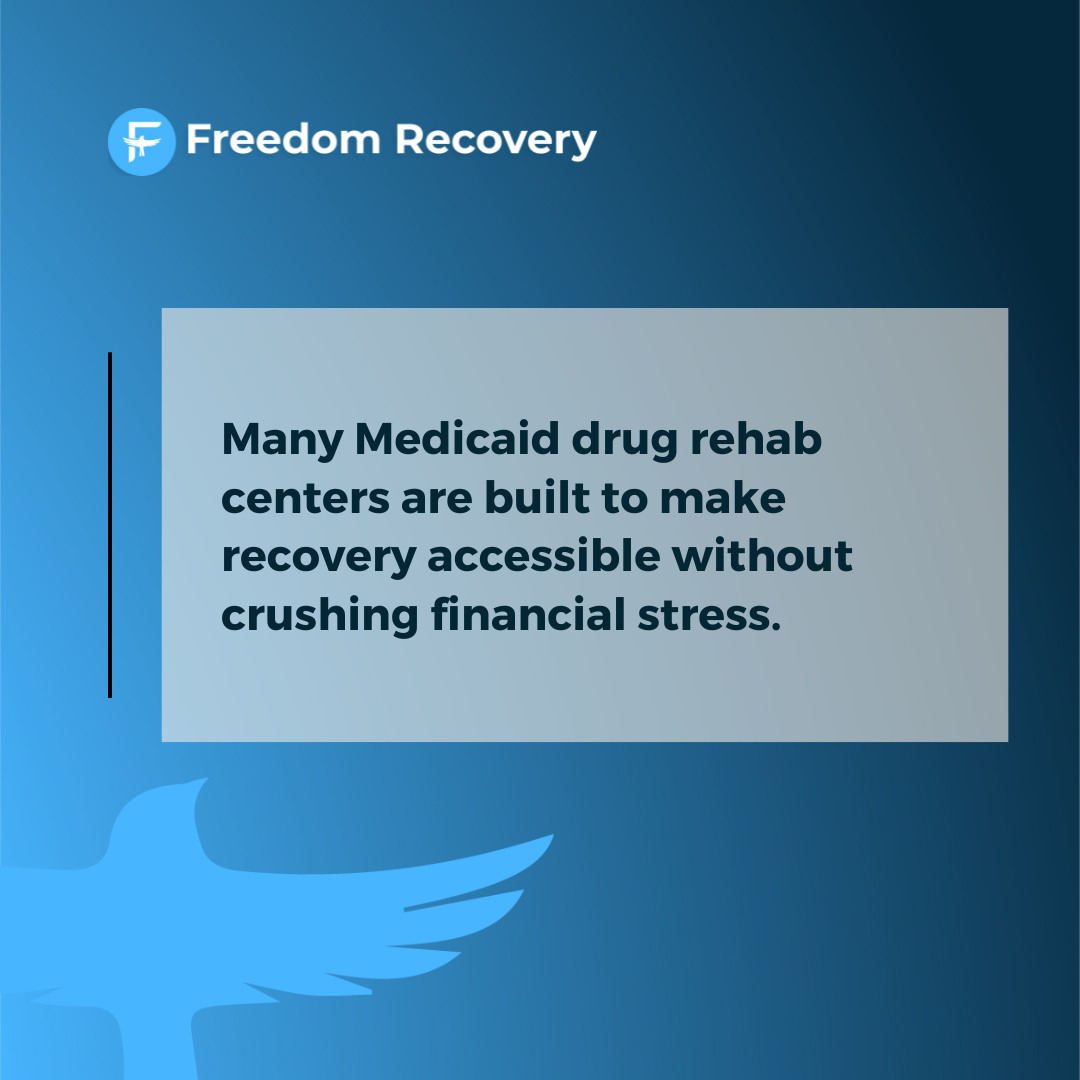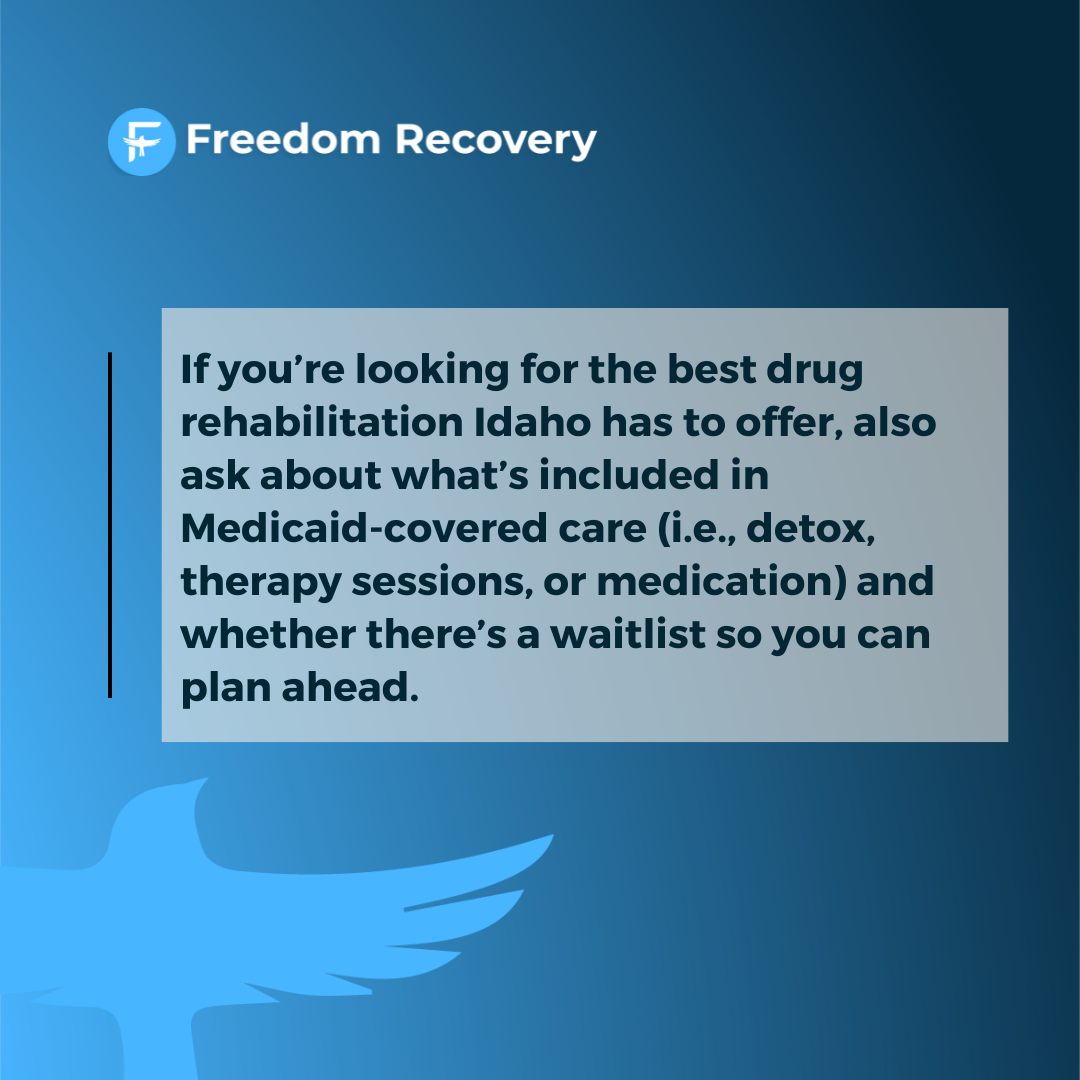

Getting help for addiction can feel impossible when your bank account is empty and private insurance isn’t an option.
If you’re on Medicaid and Medicare, you might be asking yourself, “Is there any way to get treatment without drowning in debt?” The answer is yes: Many Medicaid drug rehab centers are built to make recovery accessible without crushing financial stress.
Think of it as opening a door you didn’t know existed. Once you understand how Medicaid works for addiction treatment, you can focus on finding the right program and taking that first step toward getting your life back.
Here’s what you need to know before you start.

Medicaid isn’t just for doctor visits. It can also cover many levels of addiction care. This includes medical detox, residential or inpatient rehab, outpatient programs, and medication-assisted treatment (MAT) for substance use disorders. If you’ve been searching for an intensive outpatient program near me, there’s a good chance Medicaid can help with that, too.
To help you understand the options you have, here’s a quick breakdown of the main treatment types:
In this setting, you live at the facility full-time, with 24/7 medical and therapeutic support. This level of care is ideal if you need a fully immersive environment away from daily triggers.
It’s a highly structured program you attend during the day, but you return home or to sober housing at night. PHP works well for people who need intensive therapy but also have a safe and supportive home environment.
A step down from PHP, with fewer hours per week. However, this still offers more support than standard outpatient care and is often used as a transition phase after inpatient treatment.
With Medicaid, you can often move between these levels of care depending on your needs.

Just because a program is Medicaid-funded doesn’t mean it’s lower quality. Many Medicaid drug rehab centers provide the same evidence-based therapies, structured schedules, and licensed professionals you’d find in private-pay facilities. You could even have access to individual counseling, group therapy, medication management, and relapse prevention planning, all backed by proven treatment models.
In fact, success often comes down to the program’s approach and your level of engagement, not the size of the bill. With the right fit, a Medicaid-covered rehab can be every bit as effective as a high-cost private program.
Some centers even go beyond the basics, offering specialized tracks for certain populations, such as veterans, young adults, or those with co-occurring mental health conditions. Many also integrate holistic options like mindfulness, art therapy, or fitness programs to support your recovery from multiple angles.
Where you live can make a big difference in your treatment options.
Urban areas usually have more facilities and a wider range of services, while rural regions may have fewer providers or longer wait times. This can impact how quickly you can start treatment and what level of care is available nearby.
If you’re looking for more intensive support, searching for IOP in Idaho or “drug rehabilitation Idaho” can help you find programs in your area. You can also expand your search by checking surrounding counties, asking local hospitals or community clinics for referrals, and contacting your state’s Medicaid office for an up-to-date list of approved treatment providers.

While there are many Medicaid drug rehab centers, not every facility is set up to take this program. Some centers only accept private insurance or self-pay, so it’s important to confirm before you get too far into the admissions process.
To check, you can:
If you’re looking for the best drug rehabilitation Idaho has to offer, also ask about what’s included in Medicaid-covered care (i.e., detox, therapy sessions, or medication) and whether there’s a waitlist so you can plan ahead.
Using Medicaid doesn’t mean you’re stuck with a single option or have to settle for whatever’s closest.
Many facilities offer rehabilitation that accepts Medicaid, and within those, you can still decide what kind of program best matches your needs. That might mean choosing between inpatient and outpatient care, looking for specialized services like trauma-informed therapy or dual diagnosis support, or finding a program with a smaller, more personal setting versus a larger facility with more amenities.
The key is to remember you have a say in your recovery.
Ask about the treatment approach, staff qualifications, daily schedule, and aftercare planning. Location, program size, and available support services can also substantially impact your comfort and success.
Always remember: The more you know before enrolling, the more likely you are to find a program that truly supports your long-term recovery goals.

Getting treatment for addiction is vital. But to get quality treatment, you don’t have to go into debt or empty your bank account.
Thanks to Medicaid drug rehab centers, you can access the same evidence-based care, licensed professionals, and supportive environments as private facilities — minus the overwhelming cost. From inpatient rehab to outpatient programs, you still have options to choose the care that best fits your needs and lifestyle.
Want to explore your treatment options? You’ve come to the right page! Here at Freedom Recovery, we help you navigate the process, understand your Medicaid coverage, and connect you with the right program. Get in touch with us today!

Gain insight into long-term residential rehab. Understand what to expect, explore essential services, and find the right rehab facilities for lasting recovery.

Discover effective coping strategies for managing PTSD and addiction, how to address both challenges, and how to find healing and recovery.

Manage recovery and daily life with an intensive outpatient program near me. Learn how a program that offers flexible care can support real progress.